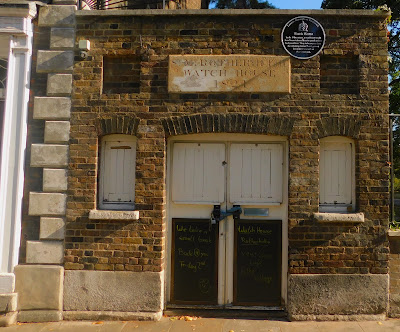Astley Cooper (1768-1841) was one of the most innovative surgeons and anatomists of the early nineteenth century. He pioneered several significant operations and added much to knowledge of the body and pathology. There is a darker side to his story, however, one which reveals much about the relationships between power and poverty.
Cooper, who hailed from Norfolk, had an amazing ability to secure bodies for dissection, for himself and his medical pupils. He once bragged before a parliamentary inquiry into the body snatching trade that he could get anyone's body to dissect if he wanted it badly enough.
Cooper' main providers were known as resurrectionists, or sack 'em up men. They could earn good money stealing corpses from graves or securing them otherwise before burial. (Image: "The Resurrectionists," c.1775, by Thomas Rowlandson).
In some cases, we don't know how many, the body snatchers didn't wait until the subjects were dead. The most famous murdering body snatchers were Burke and Hare in Edinburgh, who gave us the word "burking" for the procedure. (Image: Burke and Hare smothering a victim -- one of 16 people they murdered).
 |
Less well known than Burke and Hare are the trio of Bishop, Williams, and May. They are known as the "London Burkers." Their operation was uncovered in 1831 after the notorious case of the so-called Italian Boy. The number of their victims is unknown. Bishop and Williams were hung, May died on board a prison ship awaiting transport to Australia. (Image: the London burkers in the dock at their trial)
Several other burkers were executed, and it is likely others were never caught. Cooper got most of his bodies from an organization known as the Borough Gang. They operated out of Southwark, near Guy's and St. Thomas's Hospitals, where Cooper was a surgeon and anatomist. If you have visited Borough Market, you have been in their heartland.
Some of the Borough Gang members were or had been hospital porters, dissection room assistants, grave diggers, workhouse officers, and church sextons. Their jobs and experience made them useful to the task of acquiring fresh "subjects."
Snatched bodies could of persons recently buried. In some cases, the corpses were stolen before burial, from poorhouses, graveyard watch houses, morgues, or houses. Watch houses were created to prevent body snatching from the ground, but the watchmen sometimes looked the other way for a fee.
(Images: Rotherhithe Watch House, next to the burial ground of St. Mary's Rotherhithe, 1824, and historical plaque. This is likely to have been one of the places the Borough Gang got bodies from due to its proximity to Guy's and St. Thomas's Hospitals)
Body snatching was not even a crime until 1778. It then became a misdemeanor punishable by a fine and at most a few months in prison. It seems odd that a society that hanged people for petty theft would punish corpse stealing so lightly. But the main focus of the Georgian criminal law was to protect property. A dead body was not considered to be property. (Image: Resurrectionists, by Phiz, 1841)
The illegal source of Cooper's "dissection material" did not much hurt his reputation. His income rose to princely sums. He even operated on a king, removing a sebaceous cyst from the head of George IV in 1820. His Majesty rewarded the surgeon with the baronetcy that made him Sir Astley Cooper, Bart.
The Burke and Hare and Italian Boy scandals did lead to a law that gradually put the resurrectionists out of business. In 1832, Parliament passed the Anatomy Act, which permitted the anatomy schools to acquire the bodies of paupers who died in a workhouse if no one claimed them within three days.
The law infuriated the working classes, those most likely to end their days in a workhouse. The fury increased after Parliament added the Poor Law Act of 1834, which made admission to the workhouse a requirement for receiving poor relief (welfare).
The Burke and Hare and Italian Boy scandals did lead to a law that gradually put the resurrectionists out of business. In 1832, Parliament passed the Anatomy Act, which permitted the anatomy schools to acquire the bodies of paupers who died in a workhouse if no one claimed them within three days.
The law infuriated the working classes, those most likely to end their days in a workhouse. The fury increased after Parliament added the Poor Law Act of 1834, which made admission to the workhouse a requirement for receiving poor relief (welfare).
The New Poor Law was designed to make the workhouse environment as unpleasant as possible, to discourage requests for public assistance. Families were broken up, recipients forced to wear uniforms and fed a spare diet. The poor saw themselves as being criminalized. Previously, the only bodies that could be legally dissected were those executed for murder. (Images: Women and men paupers separated in Victorian workhouses)
Curiously, the Wikipedia article on Sir Astley Cooper does not even mention body snatching.
Further Reading:
Sarah Wise, The Italian Boy: Murder and Grave Robbery in 1830s London
Sarah Wise, The Italian Boy: Murder and Grave Robbery in 1830s London
Ruth Richardson, Death, Dissection, and the Destitute
Druin Burch, Digging up the Dead
If you enjoyed this post and would like to become a follower of my blog, just click on the blue "FOLLOW" button on the right side of the first page. Below there you can also find my previous posts. Thanks!








No comments:
Post a Comment